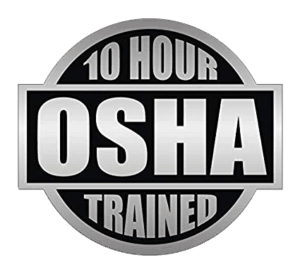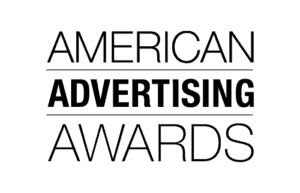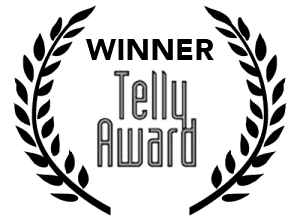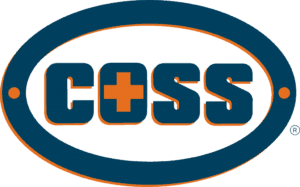YOUR BASIC GET-TO-KNOW US:
What does Launch Media do?
We make anything you can put on a screen.
What types of videos do we produce?
We produce lots of videos for a variety of clients, from corporate to nonprofit to industrial. You can find our most popular types of videos here.
How much will my video cost?
Ah, that depends on what kind of video you want. There’s lots of factors that contribute to the cost, so we’ll share the primary factors that influence cost here:
- Pre-Production, aka Creative: Think of all the time and effort that goes into the preparation of your video narrative and story, writing a script, finding locations, scheduling a crew, building a set, etc. Are you using pre-existing messaging? Or are you creating a brand new concept?
- Production Days: Each production day involves the time and energy of a lot of folks. You need a director, a producer, camera operators and at least 8 (but often 10-12) hours of their time per day.
- Post-Production: Editing hours of footage into a cohesive, compelling presentation with complementary visual effects, motion graphics, audio mastering, and your revisions… it’s a lot, and it doesn’t happen overnight. Keep this in mind when you want a “one more quick edit” – it may not actually be quick or within your original scope.
- Miscellaneous: Will your video require travel? Talent? A custom music score? All factors that affect your budget
Ultimately, our job is to work within your budget to give you a great piece of content that will matter to your audience and give value to your message.
Why does shooting video take so long?
First timers are often surprised by how much time it takes to make a 2 minute video. Video production is an art. It takes skill, hardworking, time, and a million other tiny details. We have to build sets, adjust lighting, and manage our fellow perfectly imperfect humans.
It takes time to paint a masterpiece, and it takes time to create a video. But, we promise the final product is worth the wait.
What is a typical turnaround time for a video?
While every project is different, we average 3 months from start to finish. It truly depends on the involvement and complexity of your project. Generally, the more people involved in the approval process, the longer creative and post-production will take. If you’re hoping to do something simple and straightforward, then we can likely expedite the project time.
WHO ARE ALL THESE PEOPLE?
What is a creative director?
A creative director drives the overall vision of a project. They facilitate and inspire and cultivate valuable ideas.
What’s a DP?
A DP is a Director of Photography. A DP is in charge of the overall look of a video, like the camera and the lighting. Every video project does not have a DP, due to budget constraints or simply lack of need.
What’s the difference between a producer and project manager?
Sometimes the difference is only semantics, and that’s the case with us. Generally, our producers act as project managers in that they work with the client throughout each stage of the project to create a piece of video content that works. They literally manage the project and all of the people working on your video.
But, a producer has a specialized knowledge of life on set that makes project management more informed and efficient.
What’s an editor?
They edit your video clips. They take all of the footage our crew captured during production and maneuver it to create your packaged video. Editing is a time-consuming, nuanced process, and it’s important to have someone hardworking and talented on your team.
BEHIND THE CURTAIN OF POST-PRODUCTION
What is a cut down?
You’ll only experience this preview stage if you have interviews in your video. It’s a cut where the interviewer question is cut out and the interviewee answer remains. When you receive a cut-down, you should give feedback on your favorite soundbites or ones to avoid. However, it is not necessary to give extensive commentary on a cut-down.
What is a string-out?
This is a very basic outline of how the video will flow. No music or b-roll will be included. It is simply the bones of what your video will eventually be.
Keep in mind that a .60 second deliverable could be as long as 6:00 at this stage of the process.
This is your opportunity to provide comments on sequence and overall story structure. This stage functions primarily as a preview for you to stay updated. But, extensive commentary is not necessary at this stage.
What is color-grading?
Color grading is the process of improving the appearance of an image for presentation in different environments on different devices. Various attributes of an image such as contrast, color, saturation, detail, black level, and white point may be enhanced whether for motion pictures, videos, or still images. Color grading and color correction are often used synonymously as terms for this process and can include the generation of artistic color effects through creative blending and compositing of different images. Color grading is generally now performed in a digital process either in a controlled environment such as a color suite, or in any location where a computer can be used in dim lighting.
What is motion graphics?
Motion graphics is animation, but with text as a major component. Essentially, it’s animated graphic design.
What is a rough?
A Rough is the second stage of post-production when we take the general idea from the string-out and shape the narrative, make b-roll shot selections, and choose music. Music selection is finalized by the end of this stage.
A Rough does not include motion graphics, color treatment, placeholder text. Those edits are made later.
This stage must be approved in frame before the editor can move on to the v1 stage. We ask that comments be made in frame two days before your rough deadline.
What is a v1?
A v1 is the second stage of post-production when the editor addresses client comments from the Rough, include placeholder text, placeholder lower thirds, music selection, finalize shot selection, and approve GFX designs, if relevant.
A v1 includes a locked music selection, so comments are no longer necessary on music selection, as music cannot be changed at this point.
A v1 does not include color correction, brightness adjustments, or animated graphics, but it will either have graphic and text placeholders or stills of designs to be approved. Those edits will be made in a later stage.
The v1 must be approved in frame before the editor can move onto the v2 stage. We ask that comments be made in frame two days before your v1 deadline.
What is a v2?
A v2 is the third and final stage of the post-production process when the editor addresses color correction, adjusting brightness, text, and GFX. The editor will also polish – making audio tweaks, adding foley (if necessary), perfecting the timing – during this final stage.
The v2 must be approved in frame before we can deliver the final video to you. Again, we ask that comments be made in frame two days before the v2 deadline.
How many revisions do I get?
You receive a Rough, a v1, and a v2, which is outlined in every project proposal.
What is a placeholder?
It’s not the font, it’s not the wording. It’s just a placeholder.
What are VFX?
VFX are visual effects. We use this term to describe any imagery that is created, altered, or enhanced for your video. It’s the movie magic that cannot be accomplished during live-action production and has to be added in post.
What are SFX?
SFX are special effects. They can be special visual effects: unlike VFX, which are done in post-production on a software program. SFX occur on-set during production; they are practical effects that, like props, make-up, animatronics, etc.
OR, they are special sound effects, created for something that doesn’t actually exist, like an alien spaceship during an invasion.
What is foley?
Alternatively, foley is the reproduction of everyday sound effects, like footsteps or creaking floors. Foley artists create those sounds to enhance the audio quality. We don’t usually use foley in our videos, but we have the capacity if it fits within your project scope!
What does TBD mean?
We get this a lot. With all the video vernacular, we think another acronym throws people off. But, TBD just means To Be Decided. A classic 🙂
What is compositing?
Compositing is the process of layering multiple on-screen elements onto your video like still images, text, or graphic elements. So, when you want to add text on screen or motion graphics onto a particular frame of your video, your editor uses compositing to get it done.
What is a live file?
A live file is a type of file that can be edited in depth. This is not a .jpeg or a .png or a .pdf.
What is a shot list?
A shot is a series of frames that runs throughout the course of your video. Each shot can signal different angles, transitions, emotions, and ideas.
When we build a shot list, we create a visual outline for what will go into your video. And, we will include it in a 2 column script.
What is a 2 column?
A 2 column includes your script and shot list in a document that has 2 columns. Really creative name there.
If your video has a script, then we will include a written version of that script in the left-hand column. Then, in the right hand column, we will write out a shot that pairs with each scripted line. Multiple lines could contain one shot. Multiple shots could occur during one line of script. It’s all about building a cohesive flow, so that your production crew has a clear idea of the concept they need to capture on set.









